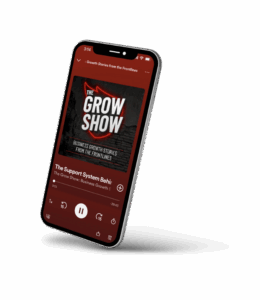Commercial painting is competitive. You’re bidding on projects that require trust, reputation, and consistency, not just a low number. Whether your prospects are property managers, facility directors, or general contractors, most don’t decide on a vendor the moment they first hear your name.
That’s why email marketing for commercial painting companies isn’t about blasting promotions. It’s about nurturing leads through thoughtful, well-timed communication that aligns with the buyer journey.
With the right email strategy, from drip campaigns and case study presentations to follow-up automation, commercial painters can stay top-of-mind, build credibility, and convert qualified leads into signed contracts.
Let’s walk through just how to do it.
Contents
- 1 Why Email Marketing Works in Commercial Painting
- 2 Step 1: Create a Drip Campaign that Mimics the Commercial Painting Sales Process
- 3 Step 2: Segment Your List , Since Not All Leads Are Created Equal
- 4 Step 3: Use Case Study Emails to Build Trust
- 5 Step 4: Automate Your Follow-Ups Without Sounding Robotic
- 6 Step 5: Track Performance and Optimize for ROI
- 7 What Kind of Commercial Painting Companies Are Most Successful with Email Marketing?
- 8 Real Results from Email Marketing Campaigns
- 9 Final Thoughts: From Lead to Signature, Email Drives the Journey
Why Email Marketing Works in Commercial Painting
Let’s start with the obvious: Most of your leads are busy. Facility managers have multiple trades to manage. Property managers have vacancies and tenant improvements to manage. GCs have subs and schedules to manage. They won’t find time to answer a cold call or sift through proposals on the spot.
But what do they check every day? Their email inbox.
Email marketing offers business painters a consistent, measurable, and scalable way to stay in the minds of decision-makers long after that first call or form fill. It helps you:
- Educate buyers on your qualifications
- Build credibility through success stories
- Stay visible through long buying cycles
- Drive action when timing is right
And unlike one-call or door-to-door selling, email marketing does not sleep. It can do your follow-up for you, even while your crew is doing the job on the job site.
Step 1: Create a Drip Campaign that Mimics the Commercial Painting Sales Process
Drip campaigns are the building block of a successful email marketing campaign. They’re a sequence of automated messages that “drip” information to leads over time based on some trigger, like downloading a services guide, asking for a quote, or attending a trade show.
In business painting, your average sales cycle isn’t exactly short. It may be weeks or even months until a property manager requests quotes, approvals, and approval to do the work. A drip campaign keeps the conversation alive that long.
Here’s an example: 6-Part Drip Campaign for Commercial Painting Leads
Email 1: Welcome and Expectations
Subject: Thanks for Reaching Out , Here’s What to Expect
Introduce your team, set timelines expectations, and give a brief guide or checklist. This email has to be personal and supportive.
Email 2: Capabilities Overview
Subject: What We Can Paint (and How We Do Things Differently)
Give a snapshot of your core services: interior and exterior painting, epoxy floor coating, high-access work, etc. Mention one differentiator, safety record, warranties, jobsite cleanup.
Email 3: Case Study #1
Subject: See How We Repainted 120,000 Sq Ft Without Disrupting Tenants
Add a short success story that fits your target customer profile. Use pics, before/afters, or numbers to establish credibility.
Email 4: Educational Content
Subject: 3 Things to Know Before Repainting a Commercial Property
Position yourself as a partner, not a vendor. Offer value, such as scheduling tips, paint system details, or compliance nuggets.
Email 5: Case Study #2
Subject: From Rusty Railings to a Fully Restored Facility
Another one, this time, say, a healthcare, school, or industrial building. Diversify verticals if you have more than one business.
Email 6: Direct Ask
Subject: Ready to Get on the Schedule?
Finish with a call to action: “Let’s schedule a quick call to discuss your property’s requirements and walk through your quote options.”
This is where you invite action. Don’t push. Provide assistance.
Step 2: Segment Your List , Since Not All Leads Are Created Equal
Not everyone on your list is ready to paint. Some are old quotes. Some were encountered at an industry convention. Others could be current clients who have not hired you in two years.
That is why list segmentation is so vital.
You must be segmenting leads by:
- Lead source (website, referral, inbound call, etc.)
- Vertical (healthcare, education, industrial, etc.)
- Stage (new lead, estimate sent, dormant)
- Service type (exterior repaint, maintenance coat, epoxy floor, etc.)
Segmenting lets you message the right people.
A fresh new incoming lead gets the full nurture series. A previous customer might get a “It’s been a while” note. A school facility manager might get a reminder of summer scheduling in spring.
This targeting doesn’t just make emails more relevant, it makes them more effective.
Step 3: Use Case Study Emails to Build Trust
Commercial painting is a trust-based sale. You’re often working in sensitive spaces: medical facilities, schools, data centers, occupied buildings.
That means proof is everything.
Case study emails are the most effective way to showcase your experience without bragging. They tell a story, highlight your process, and validate your results.
What Makes a Good Painting Case Study Email?
- Clear outcome: “Painted 80k sq ft warehouse in 10 nights with no disruption.”
- Real people: Use quotes from GCs, facilities managers, or property owners.
- Photos or visuals: Don’t skimp here. One before-and-after is worth 1000 words.
- Challenge and solution format: What was hard? How did you fix it?
Make sure to end every case study email with a low-friction CTA:
“Want to discuss a project like this? Let’s hop on a quick campaign review call.”
Step 4: Automate Your Follow-Ups Without Sounding Robotic
One of the biggest commercial painting sales gaps? The follow-up.
Your estimator sends out the quote, maybe makes one call, and then… nothing. Weeks pass. The job goes to a competitor who made two follow-up calls.
Automation solves this.
After an estimate has been sent, start a follow-up sequence:
Follow-Up Email 1: Quote Sent Reminder
Subject: Let Us Know if You Have Questions About Your Estimate
Friendly and open-ended. Leave the door open. Ask to discuss the scope with you.
Follow-Up Email 2: Project Planning Tips
Subject: Before You Finalize Your Vendor…
Reposition yourself as a guide once more. Refer to things like scheduling windows, access requirements, coatings selection. Gentle reminders of your value.
Follow-Up Email 3: Light Nudge
Subject: Quick Touch Base , Still Considering the Project?
Straightforward and respectful. Inquire whether or not they made a choice. Let them know your team is prepared to get the job done on their schedule.
If they answer, great. If they don’t, wait. Then enlist in a “long-term nurture” campaign.
Step 5: Track Performance and Optimize for ROI
Email marketing is not a one-time strategy. To see success, you need to track what works and fine-tune what doesn’t.
Key metrics to monitor:
- Open Rates: Are subject lines being noticed?
- Click-Through Rates (CTR): Are readers clicking on case studies or CTAs?
- Reply Rates: Are people penning back or scheduling calls?
- Conversion Rates: Are emails converting into signed jobs?
If you see low opens, it’s time to test some new subject lines.
If they open but don’t click, maybe the copy is too long or the CTA is not clear.
If they click but don’t book, try a different second step, a “free project scope call” instead of a simple sales meeting.
Data is the key. Review performance monthly and adjust campaigns as needed.
What Kind of Commercial Painting Companies Are Most Successful with Email Marketing?
Email marketing is a force multiplier for high-ticket, high-trust B2B buyers such as painting contractors. The more complex and more competitive the sale, the more email will win it for you.
Some common use cases:
- Regional painting contractors entering new verticals
- Firms targeting groups of multiple locations with property management
- Healthcare, education, or industrial market painters
- Contractors bidding through RFPs and need follow-ups to differentiate
- Companies that get lots of leads without any organized follow-up
If your business-to-business commercial painting company has an established background and could use some help turning interest into signed orders, email is your link.
Real Results from Email Marketing Campaigns
Case Study: Industrial Painter Books $300K in Repeat Work
A Midwestern industrial painting company used a segmented drip campaign to past customers. Within 60 days, they re-engaged a food processing plant that booked two new containment coating jobs worth $300K.
Case Study: Healthcare Painter Enters New System
A contractor selling to healthcare centers ran a vertical-specific campaign featuring case studies and facility manager advice. One of the contacts booked a walkthrough, which generated an RFP invitation for three hospitals.
Case Study: School Painter Finishes Summer Season
By starting an April email campaign to school maintenance contacts, this company booked 11 summer repaint projects before Memorial Day, a 42 percent boost from last year.
Final Thoughts: From Lead to Signature, Email Drives the Journey
Business painting clients don’t move fast, but they will. The companies who stay in front of them with the right message at the right moment win more bids and build more long-term relationships.
Email marketing isn’t about sending more messages. It’s about sending smarter ones.
And the best part? You don’t have to make it all on your own.
Let’s talk. Book your free campaign review call today and make your next chance a signature.

Madison Hendrix
Madison has worked in SEO and content writing at Abstrakt for over 5 years and has become a certified lead generation expert through her hours upon hours of research to identify the best possible strategies for companies to grow within our niche industry target audiences. An early adopter of AIO (A.I. Optimization) with many organic search accolades - she brings a unique level of expertise to Abstrakt providing helpful info to all of our core audiences.
- Madison Hendrix#molongui-disabled-link
- Madison Hendrix#molongui-disabled-link
- Madison Hendrix#molongui-disabled-link
- Madison Hendrix#molongui-disabled-link







